Apr 25, 2014Your company is about to deploy a radio frequency identification system to track assets or inventory, manage work-in-process, improve personnel safety or solve another problem that has been plaguing operations and impacting the bottom line. Is it a smart move?
That may seem like an odd question in a publication that believes in RFID's ability to boost efficiencies and reduce costs. But it's for precisely those reasons that every company should consider the question before it deploys an RFID system.
Most companies begin investigating RFID to solve a particular problem. But RFID is an enabling technology that can address many issues. The same system used to track tools could be extended to identify parts in a warehouse. A real-time location system designed to monitor hand hygiene in a hospital could also track and manage high-value assets. It might require a mix of active and passive technologies, but with up-front planning, all the data can be integrated into a firm's back-end business applications.
Companies that look at RFID as an infrastructure, or platform, on which they can build many applications will reduce costs in the long term. Of course, no company can solve all its problems at once. But companies that take a strategic approach to deploying RFID enterprisewide will be able to roll out new projects that deliver a fast return on investment.
Several organizations, including jet maker Airbus, U.K. retailer Marks & Spencer (M&S), and hospital and research center Oregon Health & Science University (OHSU), have put in place the structure—both the technology architecture and standardized business practices—that enable them to readily expand the use of RFID into new areas. Based on their experiences, as well as advice from RFID solution providers that have worked on enterprise deployments, here are seven best practices that companies both large and small in any industry should consider as they adopt RFID or add new applications.
Have a Vision
In most cases, an RFID initiative is born when specific stakeholders identify a need for tracking materials or processes and RFID is brought up as a possible way to provide visibility, says John Baker, president of consulting and integration firm Venture Research. When he initially meets with a client, he says, he looks for a shopping list of objectives, but identifies the "lowest hanging fruit" where there's the "biggest bang for the buck." At the center of all this is a key concept, he says: "Can we prove the technology and demonstrate to upper management that the initiative is worth investing in over other projects?"
Some companies, however, do have well-thought-out plans for deploying RFID companywide. Airbus, for example, developed a three-phase program to improve business processes and provide real-time automated visibility across its entire value chain of operations, from suppliers to customers, says Carlo Nizam, head of value chain visibility and auto ID. Marks & Spencer, the largest U.K. clothing retailer, set out to tag and track all clothing to be "the store in which you can always find your size," says Kim Phillips, head of packaging.
Often, identifying the value of an RFID initiative—how it can simplify, streamline or improve existing workflows—can help galvanize support within the company, says Diana Hage, CEO of software and services firm RFID Global Solution. It paints a picture for an effective end-to-end solution, she adds.
That was the approach taken by Oregon Health & Science University, in Portland, Ore. In 2005, a crossfunctional team, with representatives from nursing administration, clinical technology services, IT services, patient transportation and equipment pool services, began exploring ways to better track infusion pumps and other essential equipment across large critical-care units. The team turned to AeroScout to build a more robust network and design a system that would allow nurses to reduce the time wasted looking for equipment, says Dennis Minsent, director of clinical technical services. The group also identified a number of other priorities, including the ability to locate equipment involved in recalls, identify equipment for maintenance, monitor the temperature of refrigerators and freezers that store pharmaceuticals and other items, and locate specialty wheelchairs and stretchers to improve patient flow and speed discharge times.
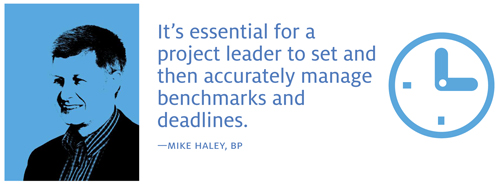
They prepared a formal presentation for OHSU's upper management and capital committee that addressed how the facility could build a platform for the future. "We made it clear that we were designing the system to meet everyone's needs then and in the future," Minsent says. The methodical and formal approach paid dividends. The team gained approval and buy-in. It installed the first RFID technology in 2006 and has since built RFID into the mainstream of its business. OHSU has added features, capabilities and applications, including temperature and humidity monitoring, maintenance scheduling, mobile tracking and systems that boost regulatory compliance.
Establish a Crossfunctional Team
An enterprise approach to RFID involves multiple departments, so it's important to set up a crossfunctional team early in the game. "The more touch points a project has, the more important it is to have input from across the organization," Hage says.
Initially, M&S established a small crossfunctional team chaired by a project manager, whose sole task was to oversee the implementation and bring together all departments involved in or affected by the project, including retail, purchasing, IT, operations and logistics. The project manager's role is crucial, Phillips says, adding, "You need a champion; without a champion, you can't succeed." As its RFID initiative has grown, so has the team, Phillips says. Today, a crossfunctional steering group, chaired by the director of retail, oversees RFID implementation. Members of the committee include representatives from the retail stores, the financial department, Avery Dennison (the retailer's technology provider) and the executive board.
Deere & Co., the world's largest manufacturer of agricultural and construction equipment, began using RFID in 2005 to track some parts and products. The asset-tracking solution proved beneficial, and by 2007, Deere had deployed roughly a dozen RFID systems in factories and warehouses. The applications included tracking work-in-process to wring inefficiencies out of manufacturing and monitoring outbound logistics operations to prevent defective products from ending up in showrooms (see RFID Gains Traction at John Deere).
From the start, Deere has taken a crossfunctional team approach. Each new RFID deployment is managed by a five-person core team, whose members play key roles—enterprise architect, factory and warehouse analyst, project manager, channel business analyst and technology architect. "We want to keep the knowledge where it should be—in the organization," said Mark Moran, the company's former manager of tracking systems. The core team works with representatives from the divisions that are considering or implementing RFID.
Start Small
Once the crossfunctional team begins to consider the many areas within the company that could benefit from RFID, it's tempting to want to tag and track everything at once. That's not a good idea, because it increases capital outlay and complicates deployment. It's important to prioritize the applications on your list.
M&S for example, is focused on using RFID to improve inventory accuracy and on-shelf availability. But the U.K. retailer has also identified 16 touch points where RFID might be used to collect data and improve processes. "We are looking at some of these other areas," Phillips said last year at RFID Journal LIVE! Europe. "We'd be foolish not to—but you can't do it all at once."
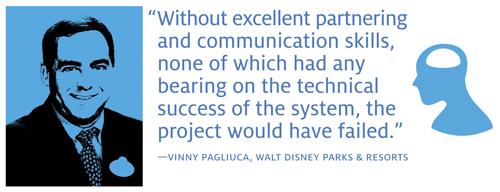
In 2003, M&S, which operates 750 stores in the United Kingdom and more than 350 in 40 other countries, began conducting field trials to prove the technology and business case. In 2004, it began tagging and tracking some clothing items, including men's suits, shirts and ties, at several locations. Gradually, it expanded the deployment to all its U.K. stores and additional types of clothing, such as men's formal and casual trousers, jackets and shirts, as well as ladies' knitwear, coats, formal and casual trousers, and suits. Now, M&S is planning to monitor home goods, such as bedding, accessories and kitchenware.
It's wise to focus on quick wins that demonstrate results within six months, Hage says, and then expand to new and broader applications. "It's critical to have clearly defined processes and boundaries in order to expand or add applications," she says. "It's important to define phases in implementations and celebrate early successes. The goal is to build momentum and interest. It's also very important to develop reference designs prior to deployment and test equipment in a lab before introducing it live."
For the past four years, Hawaiian Legacy Hardwoods (HLH), a Honolulu-based lumber investment and ecotourism firm, has been tagging and tracking koa hardwood trees, as they grow from seedlings at nurseries to trees in forests. While the koa isn't listed as an endangered species, 90 percent of the native Hawaiian tree has been harvested. HLH has RFID-tagged more than 225,000 trees to monitor their care and eventual harvesting. Its nonprofit division, LegacyTrees.org, plants and monitors koa trees for the purpose of permanent reforestation. A database contains information about each tree, including seed stock, feeding schedules and watering, to ensure a healthy crop.
Each planting season, HLH tags more trees. Since HLH began using RFID, the organization has gained knowledge and experience—and has developed a plan that will enable it to keep pace with growth and employ RFID throughout its operations. Early on, HLH conducted validation tests, including random double checks, to ensure the system worked with 100 percent accuracy, says CIO William Gilliam. But the company did not envision expanding the operation or adding new applications. "We realized that the original tags and readers couldn't perform certain tasks or weren't the best for the conditions in which they were used," he says. HLH recently revamped its RFID system and is now planning to monitor personnel, equipment and tools.
Standardize Business Practices and Processes
Before any RFID deployment, Hage says, "It's important to conduct an assessment of the facility and engage in a business process workflow review." By documenting all the steps within a workflow, she adds, it's possible to minimize disruptions to existing processes. "Where you can have uniform placements of the technology, you are generally going to have more consistent results and faster deployments."
In 2007, Airbus found itself neck deep in a spate of RFID initiatives, but lacking a uniform approach. The firm recognized a need to pull together a collection of 17 independent RFID initiatives, Nizam says. "We realized there were a lot of interesting things happening with RFID across all different parts of Airbus, but things were highly fragmented," he says. "Each individual project was looking to establish its own contracts with suppliers, and the lack of standardization in software and hardware was going to lead to higher complexities and costs. There was a clear need for a corporate program and an enterprisewide strategy, and so the Value Chain Visibility program was born."
Nizam and other officials at Airbus worked for months to introduce a life-cycle approach based on standardized systems. "Once we took a closer look at all the initiatives going on, we discovered that all projects had about 70 percent commonality, so we used it as a starting point for consolidating systems," he explains. After Nizam and the team pored over all the information, a strategy began to fall into place. "We understood the need to create a converged backbone to run all the applications on and the need to build an RFID supply chain that would support everything," he says. We wanted to take full advantage of the volumes of scale we could leverage as a large enterprise."
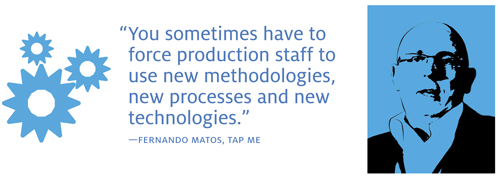
Among other things, the team closely examined workflows, processes, procedures and proof points. The goal, Nizam says, was to understand how to adapt things for full value-chain visibility. "We were focused on creating processes and workflows that could be linked to one another and essentially become part of a reusable approach that involves minimal customization," he says. "We wanted to avoid injecting costs into other processes and steps." The big-picture approach—which focused heavily on key areas such as supply-chain logistics, transportation, distribution, production and assembly, tooling management and in-service maintenance—has served as the basis for the company's industry-leading approach to RFID.
Embrace Hardware and Software Standards
Without a long-term plan for deploying RFID across the enterprise, companies can wind up with a mishmash of hardware and software. Venture Research's Baker believes companies generally benefit by avoiding vendor-specific technology. Consistent standards aid in everything from data collection to reporting, he says. "Standards allow stakeholders to develop reporting that will span local, departmental and organizational boundaries."
In the past, Baker says, companies had to perform integration on a number of discreet components—readers, antennas, fixtures, RF cabling and middleware for each read point. "All of this can be readily purchased now as a completed sealed solution at substantially less cost than integrating each component," he says. "This also improves field support and cost of maintenance."
At Airbus, Nizam says, 17 different initiatives multiplied into hundreds, if not thousands, of different technology issues and decision points. "We realized that the longer we waited to harmonize everything, the more costly and complicated everything would be." As a result, the company decided to look at things more proactively and adopt a standards-based approach.
Airbus has established a portfolio of partners that provide RFID hardware, software and support. This ensures a basic level of uniformity across different use cases and scenarios. What's more, the company has embedded this information into its internal IT systems. When updates take place, they populate across the company simultaneously. An added benefit of this approach is that a new facility can come online with an RFID initiative very quickly. Just as organizations have power or Ethernet in a building, RFID becomes a utility that's simply switched on. "Speed and cost are huge drivers," Nizam says.
At OHSU, which is tracking 150 equipment categories, a standardized technical foundation is essential. To achieve consistent and accurate results, Minsent has standardized tags, readers, software and database fields. But, he acknowledges, "What's necessary and needed for a cardiac unit may be very different from what's needed for a general medicine or pediatric unit." Working with an established set of standards enables OHSU to adapt rules, processes and workflow for individual departments, he says.
As an early adopter of RFID, M&S decided it needed to upgrade its system to meet its goals. In 2012, the firm converted its system to EPC Gen 2 standards. "The technology has moved forward and continues to move forward," Phillips says. The firm expects to see more impressive results in terms of return on investment with the newer systems, he says, "because Gen 2 technology is far more cost-effective, more accurate and faster."
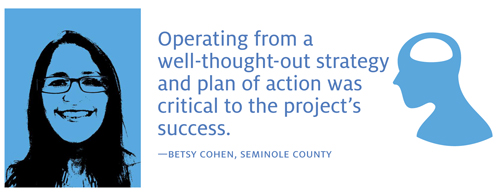
Share Information Across Departments and Divisions
It's no secret that silos are an ongoing problem for businesses, particularly larger organizations. Too often, data, information and knowledge end up squirreled away in departments and systems. Consequently, an enterprise winds up reinventing the proverbial wheel—over and over again. In general, business collaboration tools can help facilitate communication, but a more focused approach to information sharing is essential to deploy RFID successfully across an enterprise.
Airbus, for example, has constructed a business infrastructure that pushes data, information and knowledge through the organization and to its parent company, Airbus Group (formerly EADS). It includes regular internal conferences and seminars, physical visits and other sessions that extend beyond the 50-person core team. Airbus provides the same basic template to any internal group or department implementing RFID.
In addition, Airbus uses a common project-management system and business-case calculators to develop processes, metrics and business transformation activities. Nizam and his team simply adjust the deltas for these calculators on an as-needed basis per project. This reusable and standard approach helps speed up projects.
The output of all these projects provides the company's "business radar," Nizam says. RFID introduces constant real-time visibility of industrial process performance. By integrating this data with other back-end systems and using dashboards, reports and key performance indicators, he says, "we are able to adopt a continuous improvement system that shows us our real performance. We are able to do things faster, better and with less risk."
Among other things, teams can use all the information gathered by RFID to "visualize factories in 2-D and 3-D," Nizam says. "By knowing where objects are located at any given moment, we can visualize them graphically." For example, across the organization, management can determine whether containers are in the right place and workflows are taking place as desired. An added benefit: It's easy to identify what's working and what isn't and apply best practices. "It's the basis of a smart factory and a smart supply chain," he says.
Address Change Management
RFID initiatives that touch many parts of an organization and significantly alter workflows and processes often require a strong change management component. Resistance and opposition are predictable pieces of the puzzle, Hage says. "RFID project managers constantly underestimate the level of pushback they are going to experience," she says. Management must make a solid case for change and alert employees as soon as possible. (For tips to ensure a smooth transition as you deploy or expand an RFID system, see Best Practices: RFID Change Management.)
An effective change management strategy for Airbus has been to fuel relatively small projects in order to complement and build momentum for larger ones. "Many of the big projects are becoming mission critical, but we could never have started with them without proof points," Nizam says. "The small projects help us demonstrate results quickly and build a foundation for the larger ones."
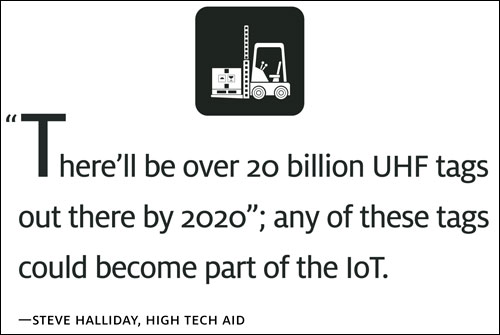
In addition, Airbus tests and validates systems across numerous iterations and conditions in its industrial showroom and innovation center in Toulouse, France. This enables project managers to appraise how the change process is unfolding so they can adjust and adapt the systems—and work with groups to manage expectations—as needed.
Phillips says M&S builds support for initiatives by focusing on two key areas: achieving consensus and support among executives and project leaders, and training and educating for management and staff. "Through engagement and top-quality training, we have won hearts and minds of our store colleagues and management teams," he explains. This approach "has persuaded everyone that RFID is helping to deliver improvements for customers and for themselves. The evidence is demonstrated in extremely high compliance levels in stores."
Clearly, taking a strategic approach to deploying RFID enterprisewide brings visibility and benefits to all areas of a company's operations. It also results in faster, reliable and cost-effective rollouts. Building a seamless and integrated RFID infrastructure allows a company to fulfill its goal, whether that's integrating disparate business units, providing better customer service, transforming hospital operations to reduce labor and improve patient care, or preserving native trees.
"At the start, we had a challenging job to convince people to implement RFID and get projects off the ground," Nizam says, "but today, as more projects have been delivered and the results have been demonstrated, the challenge is keeping up with demand." In 2008, Airbus had fewer than five RFID projects under way, mostly small to medium-size initiatives. Today, the number stands at nearly 60. What's more, Nizam notes, these projects are of much larger scope in both size and geography. "For example, one initiative alone spans five countries and 10 separate manufacturing facilities," he says. "It has helped us build planes faster and more efficiently—and improve quality."

